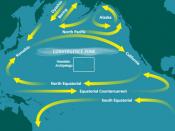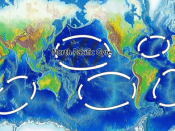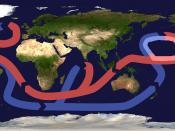�PAGE � �PAGE �1� Garbage Patch
The Great Pacific Garbage Patch
and Our Plastic Ocean
Bryan Taylor
Environmental Science
Dr. Tabone
Februrary 1, 2009
Walking on any beach these days, you're sure to find at least some form of plastic on the shoreline. Granted, there's a lot of other stuff floating out in the sea, but unlike natural materials, plastic doesn't degrade normally. Plastic bottles, containers, foam pieces made from polyurethane, and fishing lines are showing up in whole or pieces, and are getting dissolved into the water, to be absorbed by plankton. So much plastic has taken over our oceans, in fact, that in the middle of the North Pacific Ocean, there is a gathering of plastic, debris and toxins twice the size of Texas (Casey, 2007) affectionately dubbed the Great Pacific Garbage Patch.
The reason for this large amassed garbage pile in the middle of the ocean is because of the flow of the tides, and in the center there is a slow clockwise spiral that has collected the trash (Greenpeace, 2008).
All this plastic wouldn't be such a problem if it didn't have any harmful effects, but seabirds and other animals are swallowing it misconceiving it as prey. Plastic also has an innate ability to soak up chemicals, which in turn is getting into the animals and poisoning them (Greenpeace, 2008). Organisms are also finding their way onto these floating pieces and traveling outside of their normal habitat, and they are becoming an influence on an environment that previously wasn't exposed to them (Greenpeace, 2008).
Even though most plastic floats, nearly 70 percent of the plastic accumulated in the ocean is on its floor, blanketing the organisms and plants below. Dutch Scientists have deduced that based on the 110 pieces of litter they found per square...


